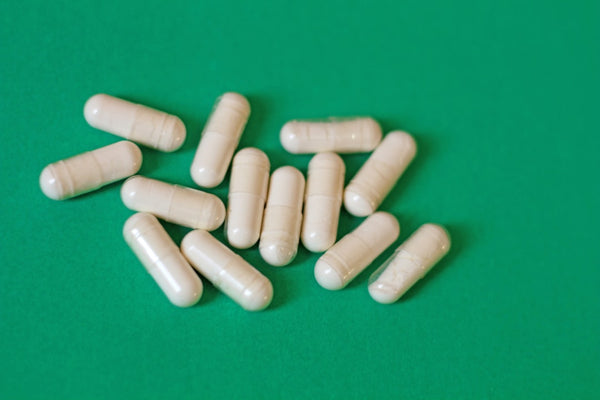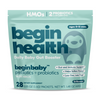European vs. U.S. Baby Formula: What Parents Should Really Know
share this article

For many families, the transition from breast milk to formula isn’t always smooth. Some babies tolerate the switch well, while others experience vomiting, reflux, rashes, or other signs of discomfort. As a result, a growing number of American parents are exploring European infant formulas in search of gentler ingredients, stricter safety standards, or more breast milk–like formulations.
But are European formulas really “better” or just different?
Understanding the regulatory, nutritional, and ingredient differences between U.S. and European baby formulas can help parents make confident, informed decisions about what’s best for their little one.
Key Nutrients: DHA, ARA, and Iron
Both the U.S. Food and Drug Administration (FDA) and the European Commission set minimum standards for essential nutrients in infant formula. However, the specifics can vary.
-
DHA (Docosahexaenoic Acid): Required in all European infant formulas. It supports brain and eye development. In the U.S., DHA is optional and not required by regulation, though many formulas include it.
-
ARA (Arachidonic Acid): Often added alongside DHA in both markets, but concentrations and sources can vary.
-
Iron: U.S. formulas typically contain higher iron levels—1.8 mg/100 kcal—compared to Europe’s limit of 1.3 mg/100 kcal. A 2023 analysis found that 96% of U.S. formulas exceeded European iron limits, which may affect tolerability for some babies [1].
Key Takeway:
European formulas may better match breast milk’s natural nutrient ratios, while U.S. formulas often prioritize fortification against deficiencies.
Ingredient Standards and Organic Options
European formulas are often praised for their cleaner ingredient lists and for good reason:
-
Primary carbohydrate: European formulas almost always use lactose, the natural sugar in breast milk. Many U.S. formulas use corn syrup solids, glucose, or maltodextrin as cheaper alternatives, which may affect digestion and blood sugar.
-
Organic certification: EU organic standards are stricter, requiring that cows are grass-fed, antibiotic-free, and raised without synthetic pesticides. U.S. organic formulas meet USDA standards but still allow certain ingredients (like hexane-extracted DHA or maltodextrin) not permitted in EU organic products.
-
Additives and processing aids: Europe follows the Precautionary Principle—if an ingredient is questionable, it’s restricted until proven safe. The U.S. allows more additives (e.g., carrageenan, some emulsifiers) that may be limited or banned in the EU.
Key Takeaway: European formulas tend to avoid corn-based sugars and questionable additives, while U.S. formulas are more varied in ingredient sourcing and processing.
Gut Health: Prebiotics and Probiotics
Breast milk naturally contains Human Milk Oligosaccharides (HMOs) that feed beneficial gut bacteria. While both markets allow the use of prebiotics and probiotics in formula, their regulations differ.
-
European formulas more consistently include prebiotics like GOS (galacto-oligosaccharides), FOS (fructo-oligosaccharides), or even synthetic HMOs like 2'-FL.
-
U.S. formulas may include prebiotics or probiotics, but it's not mandatory, and labeling can be inconsistent.
Key Takeaway: If you’re looking for a formula that supports gut health from during infancy, European formulas often offer more comprehensive microbiome support.
Heavy Metals: A Growing Concern
One of the biggest differences between U.S. and European formulas lies in the regulation of toxic heavy metals like lead, arsenic, cadmium, and mercury.
-
The EU has stricter maximum levels and updates them regularly to protect infant health [2].
-
In the U.S., the FDA’s Closer to Zero initiative is still developing voluntary guidelines, and routine testing of infant formula for heavy metals is not required [3].
A 2022 FDA Total Diet Study found detectable levels of heavy metals, including uranium, in 2 out of 4 U.S. formulas tested [4]. Despite the findings, no public recalls were issued.
Key Takeaway: If avoiding heavy metals is a top concern, European formulas currently operate under stricter contaminant limits.
Macronutrients: Carbs, Fats, and Protein Sources
-
Carbohydrates: U.S. formulas often contain a mix of lactose and processed sugars (e.g., corn syrup solids), especially in “sensitive” formulas. European brands typically rely solely on lactose, even for gentle or hypoallergenic options.
-
Fats: Both markets use blends of vegetable oils (e.g., palm, coconut, sunflower) to mimic breast milk fat. However, some European brands emphasize medium-chain triglycerides (MCTs) for easier digestion and may avoid palm oil entirely.
-
Proteins: European formulas often better match the whey-to-casein ratio of breast milk. Both markets offer hydrolyzed and specialty formulas, including goat milk and soy-based options, but ingredient sourcing and processing standards may differ.
Key Takeaway: Europe tends to prioritize more digestible ingredients and breast milk mimicry, while U.S. formulas may rely more on cost-saving ingredients.
The Truth About Importing Formula
Not all European formulas are FDA-reviewed, meaning many are sold through “gray market” channels online. These may not meet FDA labeling or safety requirements, though many still meet nutrient standards.
A 2019 study found that 15 out of 16 European formulas sold online in the U.S. met FDA nutritional requirements, but not labeling laws [5].
Begin Health Expert Tip:
If importing formula, use a reputable source that stores and ships products safely. And always talk with your pediatrician before switching.
What Should Parents Do?
Navigating infant formula can be overwhelming. Here's a mini list of priority items to check for to help you feel more informed and confident in your decisions:
-
Look for lactose as the main carb (avoid corn syrup solids if possible)
-
Choose organic when possible to avoid pesticides and unnecessary additives
-
Use high-quality water to prepare formula (filtered or bottled)
-
Pay attention to how your baby feels: digestion, sleep, mood, and growth are better indicators than any label
-
Ask your pediatrician about formula transitions, especially if you’re considering imported products
Summary
Both U.S. and European baby formulas are designed to meet babies’ nutritional needs, but they differ in philosophy, processing, and regulation. If you're looking for cleaner ingredients, breast milk–like formulations, and tighter heavy metal standards, European formulas may be the better fit.
Ultimately, the best formula is the one your baby tolerates, thrives on, and that works for your family’s lifestyle. As pediatric experts often say: fed is best, but informed is better.
















